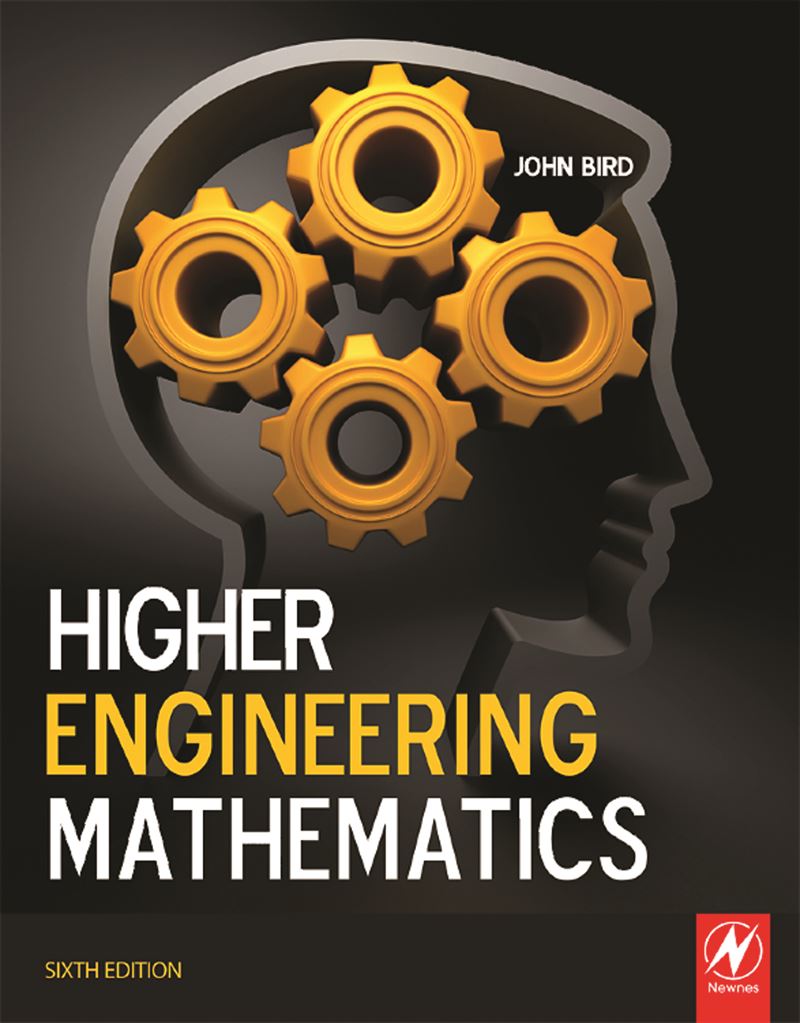This sixth edition of ‘Higher Engineering Mathematics’ covers essential mathematical material suitable for students studying Degrees, Foundation Degrees, Higher National Certificate and Diploma courses in Engineering disciplines.
In “Higher Engineering Mathematics” the topics have been arranged into the following twelve convenient categories: number and algebra, geometry and trigonometry, graphs, complex numbers, matrices and determinants, vector geometry, differential calculus, integral calculus, differential equations, statistics and probability, Laplace transforms and Fourier series.
New material has been added on logarithms and exponential functions, binary, octal and hexadecimal, vectors and methods of adding alternating waveforms. Another feature is that a free Internet download is available of an exercise (over 1100) of problems contained in the book.
The basic aim of the content in this text book is to provide the fundamental analytical and underpinning knowledge and techniques needed to successfully complete scientific and engineering principles modules of Degree, Foundation Degree and Higher National Engineering programs.
Higher Engineering Mathematics – 6th Edition: Table of Content
- Algebra
- Partial fractions
- Logarithms
- Exponential functions
- Hyperbolic functions
- Arithmetic and geometric progressions
- The binomial series
- Maclaurin’s series
- Solving equations by iterative methods
- Binary, octal and hexadecimal
- Introduction to trigonometry
- Cartesian and polar co-ordinates
- The circle and its properties
- Trigonometric waveforms
- Trigonometric identities and equations
- The relationship between trigonometric and hyperbolic functions
- Compound angles
- Functions and their curves
- Irregular areas, volumes and mean values of wave forms
- Complex numbers
- De Moivre’s theorem
- The theory of matrices and determinants
- The solution of simultaneous equations by matrices and determinants
- Vectors
- Methods of adding alternating wave forms
- Scalar and vector products
- Methods of differentiation
- Some applications of differentiation
- Differentiation of parametric equations
- Differentiation of implicit functions
- Logarithmic differentiation
- Differentiation of hyperbolic functions
- Differentiation of inverse trigonometric and hyperbolic functions
- Partial differentiation
- Total differential, rates of change and small changes
- Maxima, minima and saddle points for functions of two variables
- Standard integration
- Some applications of integration
- Integration using algebraic substitutions
- Integration using trigonometric and hyperbolic substitutions
- Integration using partial fractions
- The t =tanθ/2 substitution
- Integration by parts
- Reduction formulae
- Numerical integration
- Solution of first order differential equations by separation of variables
- Homogeneous first order differential equations
- Linear first order differential equations
- Numerical methods for first order differential equations
- Second order differential equations
- Power series methods of solving ordinary differential equations
- An introduction to partial differential equations
- Presentation of statistical data
- Measures of central tendency and dispersion
- Probability
- The binomial and Poisson distributions
- The normal distribution
- Linear correlation
- Linear regression
- Introduction to Laplace transforms
- Properties of Laplace transforms
- Inverse Laplace transforms
- The solution of differential equations using Laplace transforms
- The solution of simultaneous differential equations using Laplace transforms
- Fourier series for periodic functions of period 2π
- Fourier series for a non-periodic function over range 2π
- Even and odd functions and half-range Fourier series
- Fourier series over any range
- A numerical method of harmonic analysis
- The complex or exponential form of a Fourier series
- Essential formulae
Conclusion
If you really enjoyed Higher Engineering Mathematics – 6th Edition, I’d be very thankful if you’d help it spread by emailing it to a friend, or sharing it on Twitter or Facebook and pin post images on your Pinterest. Thank you very much!
Did you read “Higher Engineering Mathematics – 6th Edition” on the way? Which one you are reading—and how it is similar to one of this?
- What do you think about Higher Engineering Mathematics – 6th Edition?
- What would you like differently?
- What other ideas do you think to these books that I may have not mentioned?
Leave a comment below to tell us about your feed back!
Related Topics: If you enjoy this book, then there are some more interesting books are given below for you!
Our Android Apps
The Google Play store contains over 3 million apps; some are masterpieces. Our team is also participating in making android projects. If you really enjoy this article, “Higher Engineering Mathematics – 6th Edition” then you should also try some of our educational android apps and support us by giving us rating in Google Play Store, if you love these apps.



































